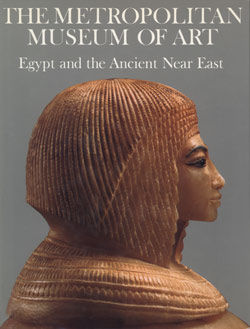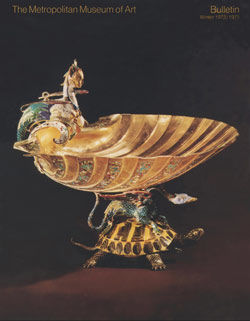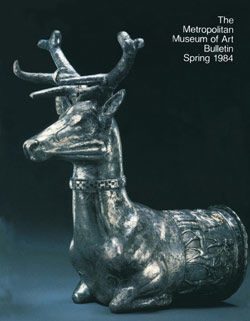Plaque with horned lion-griffins
Not on view
In the sixth century B.C., under the leadership of Cyrus the Great, the Persians established themselves at the head of an empire that would eventually extend from eastern Europe and Egypt to India. The Achaemenid Period is well documented by the descriptions of Greek and Old Testament writers and by abundant archaeological remains.
Like the Achaemenid gold vessel decorated with the forepart of a lion also in the Museum's collection, this ornament depicts the winged lion-monster but here two creatures are shown rampant. In place of the lion's ears they have those of a bull. Horns curl back over spiky manes and the lion's neck is covered with a feather pattern. Sharply stylized wings extend over two of the five bosses and serve as decorative balace for the design. Heavy rings attached to the back suggest that the ornament was worn on a leather belt. the similar treatment of the lion motif on different types of objects demonstrates decorative conventions of the period.
Due to rights restrictions, this image cannot be enlarged, viewed at full screen, or downloaded.




